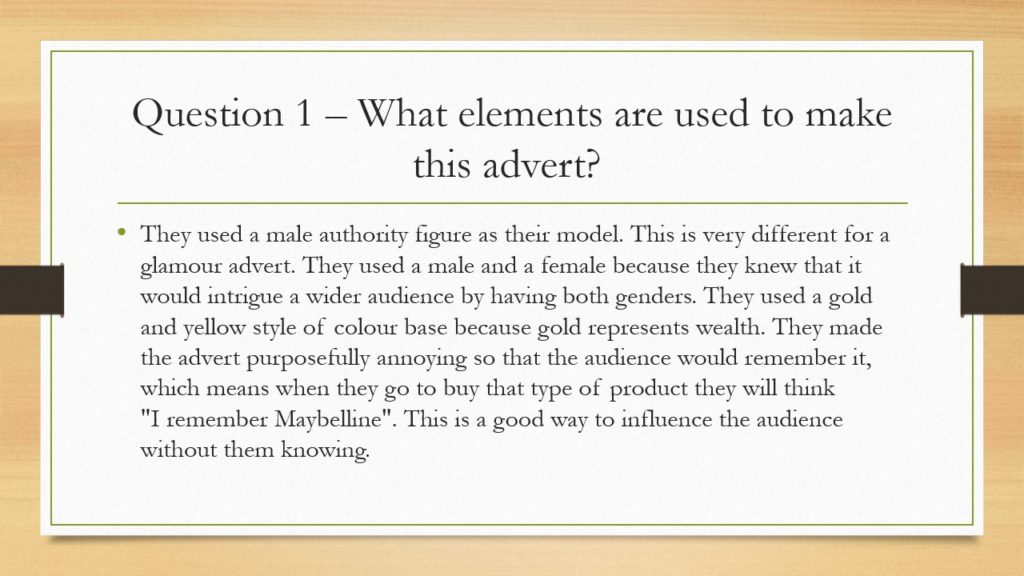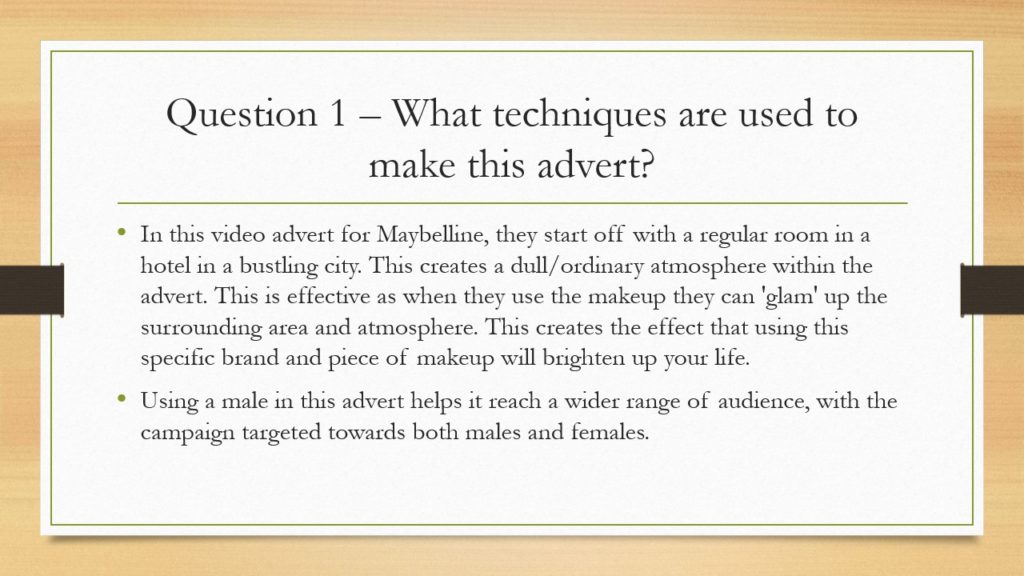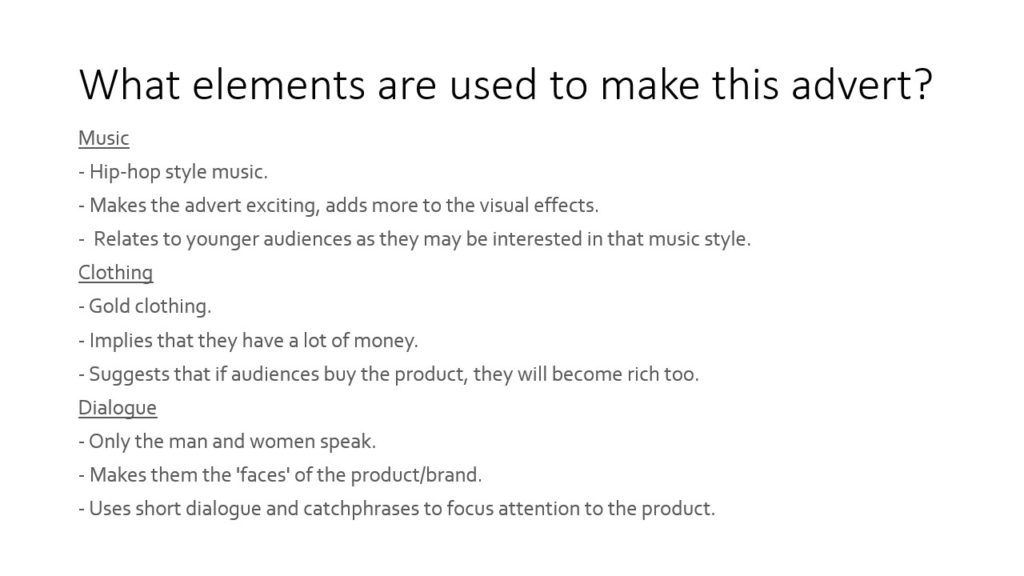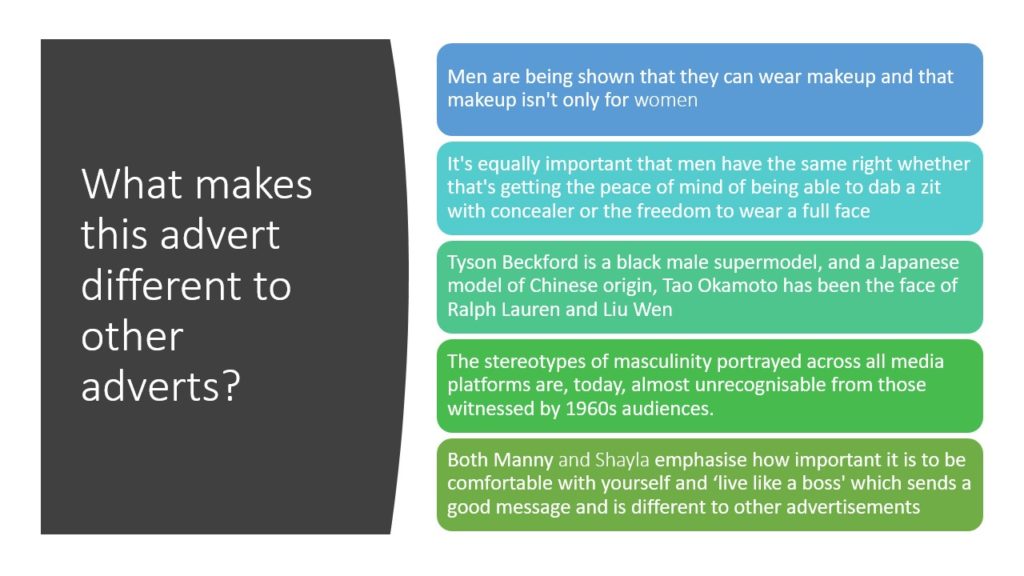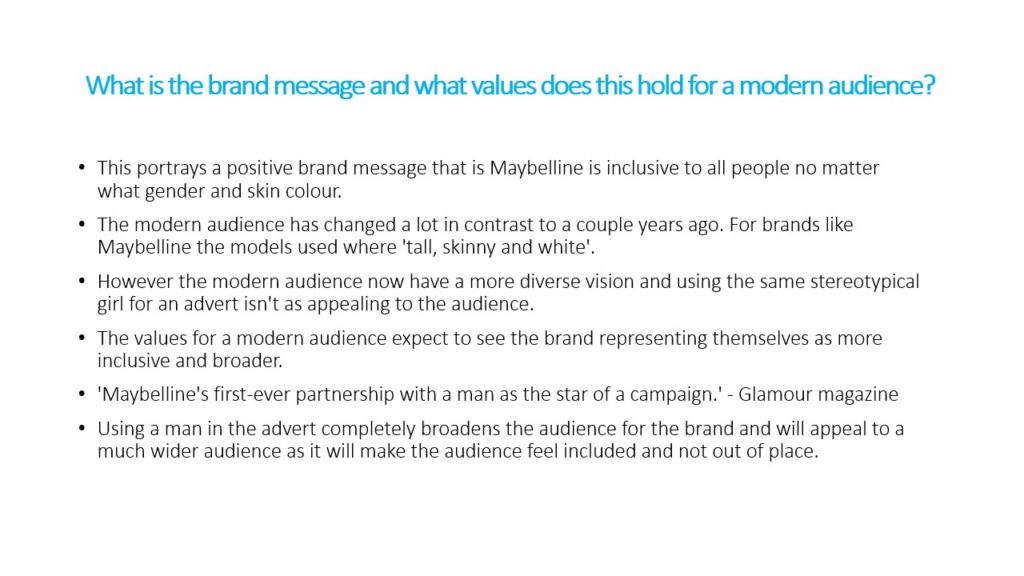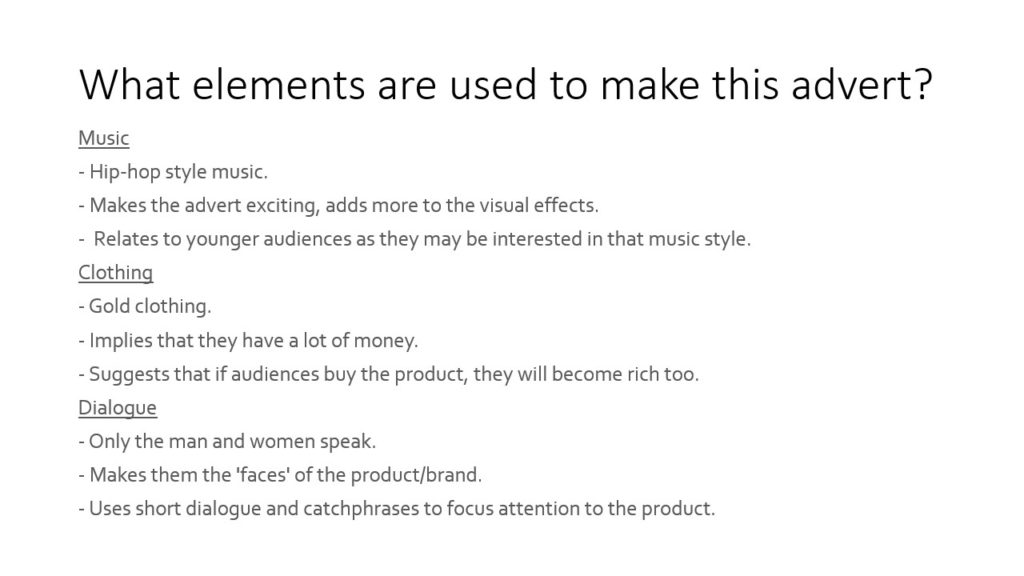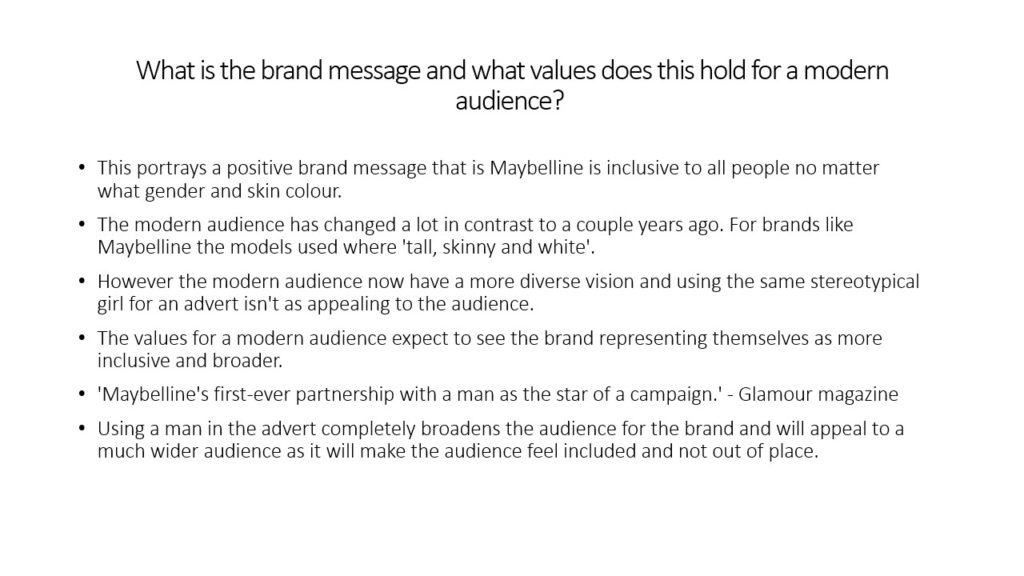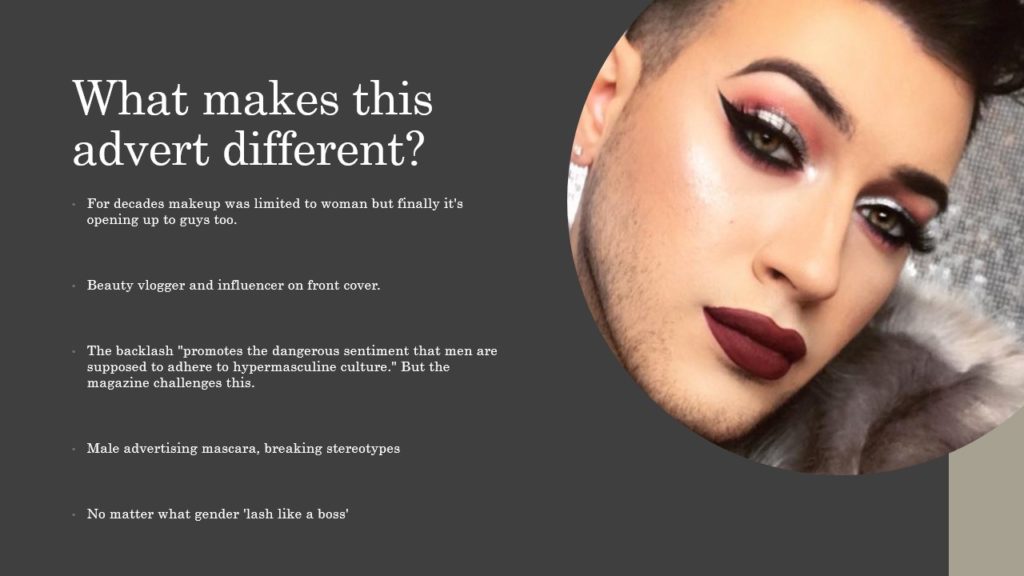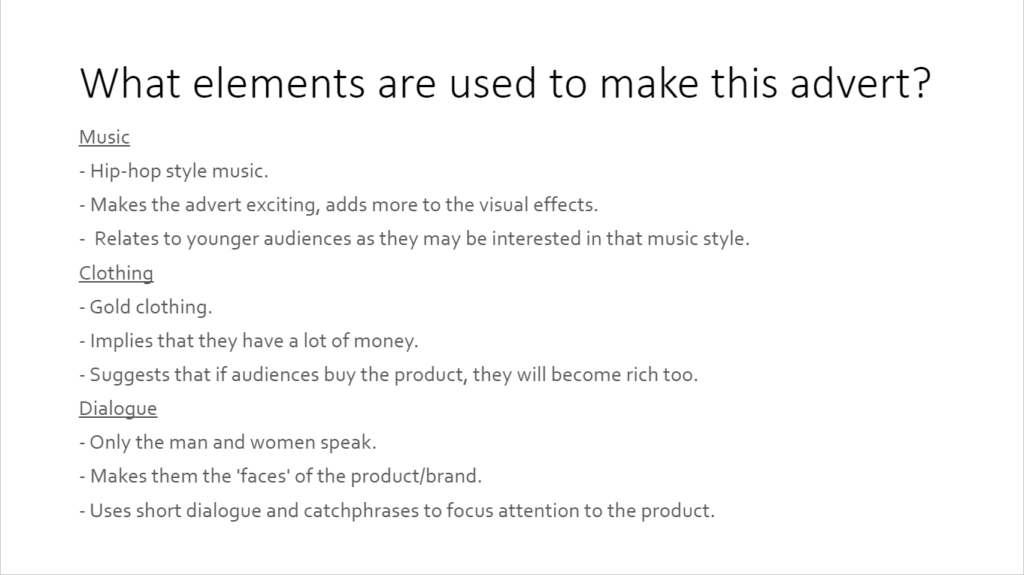I Believe both pieces use gender to sexualise the product and to appeal to the heterosexual white middle class. Both media pieces select precise signs and combined them to make complex paradigms and syntagm and I will identify them and decode them to their most simple semiotic groups. Furthermore I will look at the context and reason for choices to represent gender in certain ways, adhering to and breaking the dominant ideology. Although they are different media forms they have many similarities in signs and in language but there are distinct differences making them identifiable as there own media forms. Finally I will address the impact not only of the obvious dominant ideology but also the historical, social and political contexts of media.
In Men’s Health they select black and blue on a white background, black and blue both being stereotypically male colours and add to this being a reactionary text, and use a semantic field of aggressive and destructive words, blast, demolish, slay and burn, which creates a paradigm of empowerment for the male reader. These two paradigms are the main way the magazine displays its intent of having a male audience, excluding the title of Men’s Health.This is furthered by the shining muscular man on the front cover. Through the plain grey shirt a shine from sweat and/or oil shows he has just finished working which focuses it appeal to the average middle aged middle to low class as they can relate and connect to the character. Through the use of the depiction of the stereotypical male it finishes off the representation males and the way males are marketed to.
The Tomb Raider cover has similarities to Men’s health as it is marketed towards males again but depicts a female on the front cover where she has perfect skin and make-up and sexualised body parts. This is a juxtaposition to the depiction of Vin diesel as she is the perfect ideal woman in the eyes of the dominant ideology and the majority of the male population. This is done to sexualise her and use her as a hook into the game, not because of the content or relatability but because of sexual attraction. The clear objectification is attempted to be covered by supposed empowerment by shoe horning a female into a male dominated role rather than creating a new role for a female. The empowerment is well achieved through the iconic signs of guns and adventure gear showing that she is brave and strong, this only creates a flimsy vale for a female recreation of similar male character, Indiana Jones, rather than a new engaging role or character. The sexualisation is furthered more subtly with the streaks of light highlighting both the breasts and rear creating an exaggerated curvy character.
Overall both pieces are set towards the stereotypical male audience


